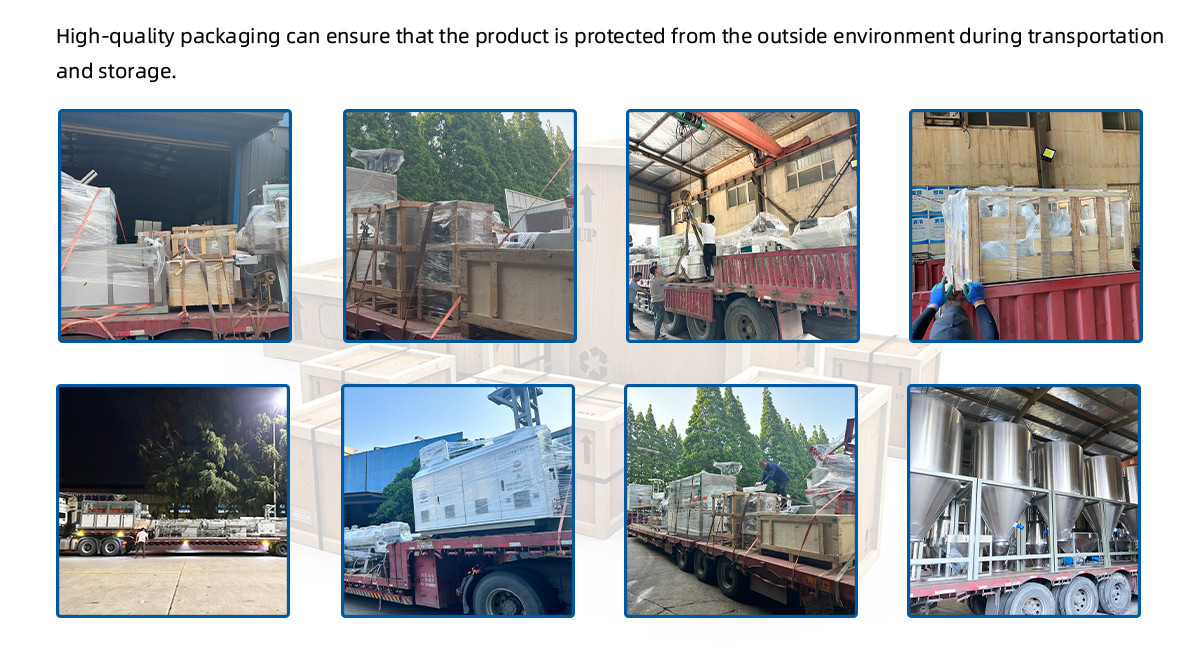▏Product Vedio
▏Product Introduction
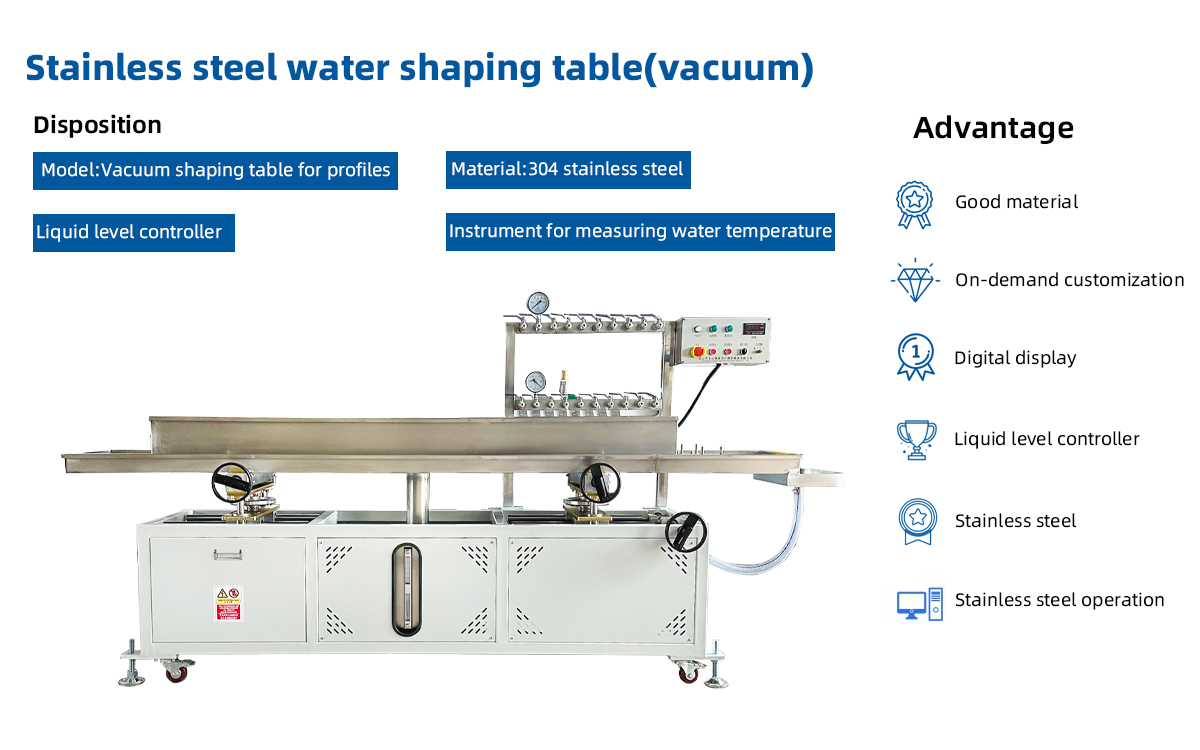
▏Vacuum Water Cooling Tank: A Comprehensive Solution for Efficient Cooling and Calibration
The Vacuum Water Cooling Tank is a highly efficient and versatile piece of equipment designed for cooling and calibrating extruded materials, particularly in industries like plastic, metal, and rubber manufacturing. By combining the principles of vacuum calibration and water cooling, this tank ensures that the extruded products maintain their shape, size, and surface quality during the solidification process. It is widely used for the production of pipes, profiles, cables, and various other materials that require precise cooling and shaping.
This product introduction will delve into the features, benefits, and applications of the Vacuum Water Cooling Tank, highlighting how it optimizes production efficiency and product quality.
▏What is a Vacuum Water Cooling Tank?
A Vacuum Water Cooling Tank is an essential machine used in the extrusion process to cool and calibrate extruded products, such as plastic pipes, profiles, and metal profiles. After the extrusion process, the material is hot and malleable, requiring controlled cooling to solidify and take its final shape. The cooling tank uses a combination of water cooling and vacuum calibration to ensure that the extruded material maintains its intended dimensions and surface quality without distortion or defects.
In the tank, the extruded material is submerged in a water-filled chamber while a vacuum is applied to the material's surface. This vacuum forces the material into a mold or die, where it maintains its size and shape during the cooling process. The controlled water cooling ensures uniform temperature reduction, solidifying the material and preventing warping or cracking.
▏Key Features of the Vacuum Water Cooling Tank
 | 1. Vacuum Calibration for Precision
The vacuum calibration system is one of the most important features of the Vacuum Water Cooling Tank. As the extruded material enters the tank, the vacuum gently pulls it into a mold or die, ensuring that it retains its intended shape and dimensions. This helps eliminate defects such as ovality, size variations, and surface irregularities, resulting in a high-quality product with consistent measurements. |
 | 2. Efficient Water Cooling System
Water cooling is a crucial component of the Vacuum Water Cooling Tank. The tank is equipped with an efficient water circulation system that ensures rapid cooling of the extruded material. The temperature of the water is precisely controlled to achieve even cooling throughout the product. The cooling process helps solidify the material and prevent internal stress, warping, or dimensional inaccuracies that could otherwise arise. |
 | 3. Stainless Steel Construction
The Vacuum Water Cooling Tank is typically constructed from high-quality stainless steel, making it durable, resistant to corrosion, and capable of withstanding the harsh conditions of the cooling and calibration processes. Stainless steel ensures that the tank remains operational even under extreme temperatures and extended exposure to water and chemicals, guaranteeing long-term reliability and performance. |
 | 4. Adjustable Water Flow and Pressure
The tank is designed with adjustable water flow and pressure settings, allowing operators to customize the cooling process based on the type of material being processed and the desired results. The ability to adjust these parameters provides flexibility for different production requirements, making the Vacuum Water Cooling Tank suitable for a wide range of extruded materials and sizes. |
 | 5. Automated Temperature Control
Many Vacuum Water Cooling Tanks come equipped with an automated temperature control system that continuously monitors and adjusts the water temperature during the cooling process. This system ensures that the material cools at a consistent and controlled rate, helping to prevent defects such as thermal shock or uneven solidification. |
 | 6. High Efficiency and Low Energy Consumption
The Vacuum Water Cooling Tank is designed to be energy-efficient, using minimal water and power while still providing effective cooling. The advanced circulation system ensures that the water is efficiently reused and heated only when necessary, making it an environmentally friendly and cost-effective solution for large-scale production. |
 | 7. User-Friendly Control Panel
The machine is equipped with a user-friendly control panel that enables operators to monitor and adjust key parameters such as water temperature, flow rate, vacuum pressure, and cooling time. The intuitive interface ensures easy operation and minimizes the likelihood of errors, improving overall production efficiency. |
▏Technical Parameters
Applicable range | small diameter plastic profile |
| Cooling mode | water cooling |
| Tank material | 304 stainless steel |
Vacuun pump power | 2.2kw;1 set |
| Water pump power | 0.55kw silent pump;1 set |
| Fully automated operation |
▏Main Details
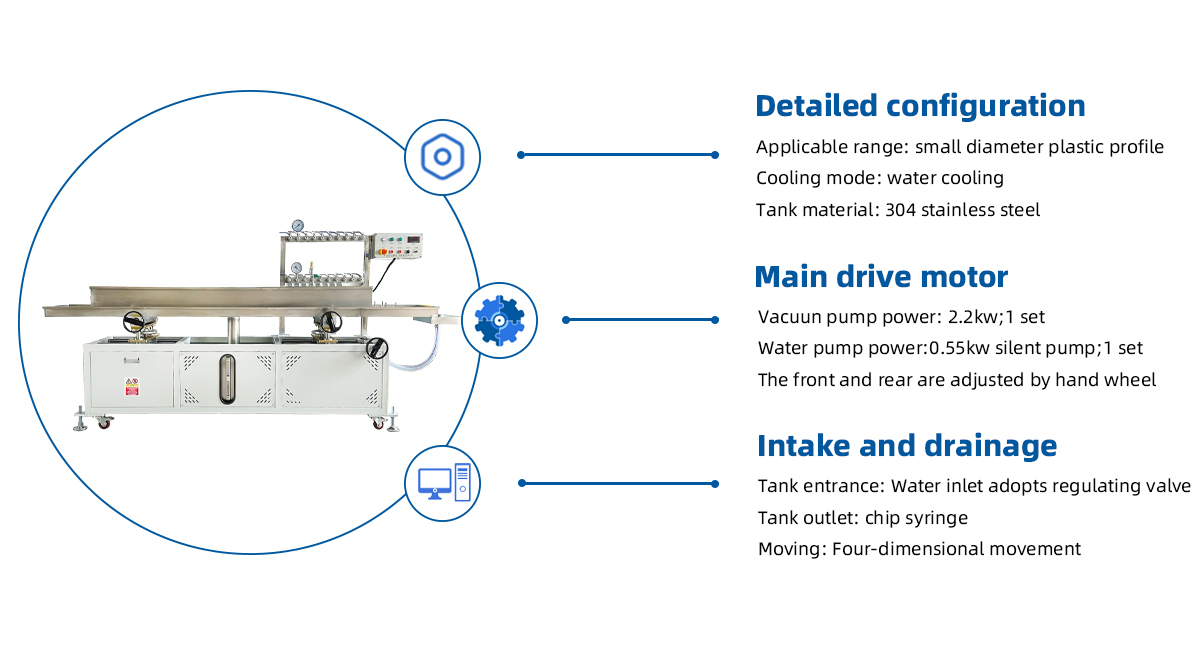
▏Product Photos
▏Product Application
Stainless steel Vacuum Water Cooling Tank for plastic profiles plays a crucial role in the production process of plastic profiles, and is a key equipment to ensure product accuracy, quality and production efficiency. The following is a detailed explanation of its application.
| 1 | Application |
| First of all, the application of Stainless steel Vacuum Water Cooling Tank for plastic profiles is reflected in its precise shaping ability.In the production process of plastic profiles, the plastic in the molten state needs to be cooled and shaped in order to cure into the desired shape and size. Through its unique vacuum effect, the molten plastic can be tightly attached to the mold, thus achieving precise setting and size control. This precise shaping ability not only improves the accuracy and consistency of the product, but also greatly reduces the waste products caused by irregular shapes or dimensional errors, thereby improving production efficiency and reducing production costs. |
| 2 | Cooling function |
| Secondly, the cooling function of Stainless steel Vacuum Water Cooling Tank is also an important aspect of its application.An efficient cooling system is used inside the tank to cool the plastic profiles quickly and evenly by circulating water or other media. This cooling method can rapidly reduce the temperature of the profile, so that it can quickly cure and reach a stable state. The uniformity and speed of cooling are essential to ensure the quality and performance of plastic profiles. By precisely controlling the cooling process, the tank ensures that the profiles do not crack or deform during the curing process, thus ensuring the overall quality of the product. |
| 3 | Material and structural characteristics |
|
In addition, the material and structural characteristics of Stainless steel Vacuum Water Cooling Tank also provide strong support for its wide application.Stainless steel has excellent corrosion resistance and durability, which can maintain its good performance in a long time of use. At the same time, the structural design of the sink is reasonable, and the various parts are closely connected to ensure that there will be no water leakage and leakage during use. This high-quality material and structure enables the water tank to adapt to a variety of complex and harsh production environments, to meet the needs of large-scale, continuous production. |
▏About Us
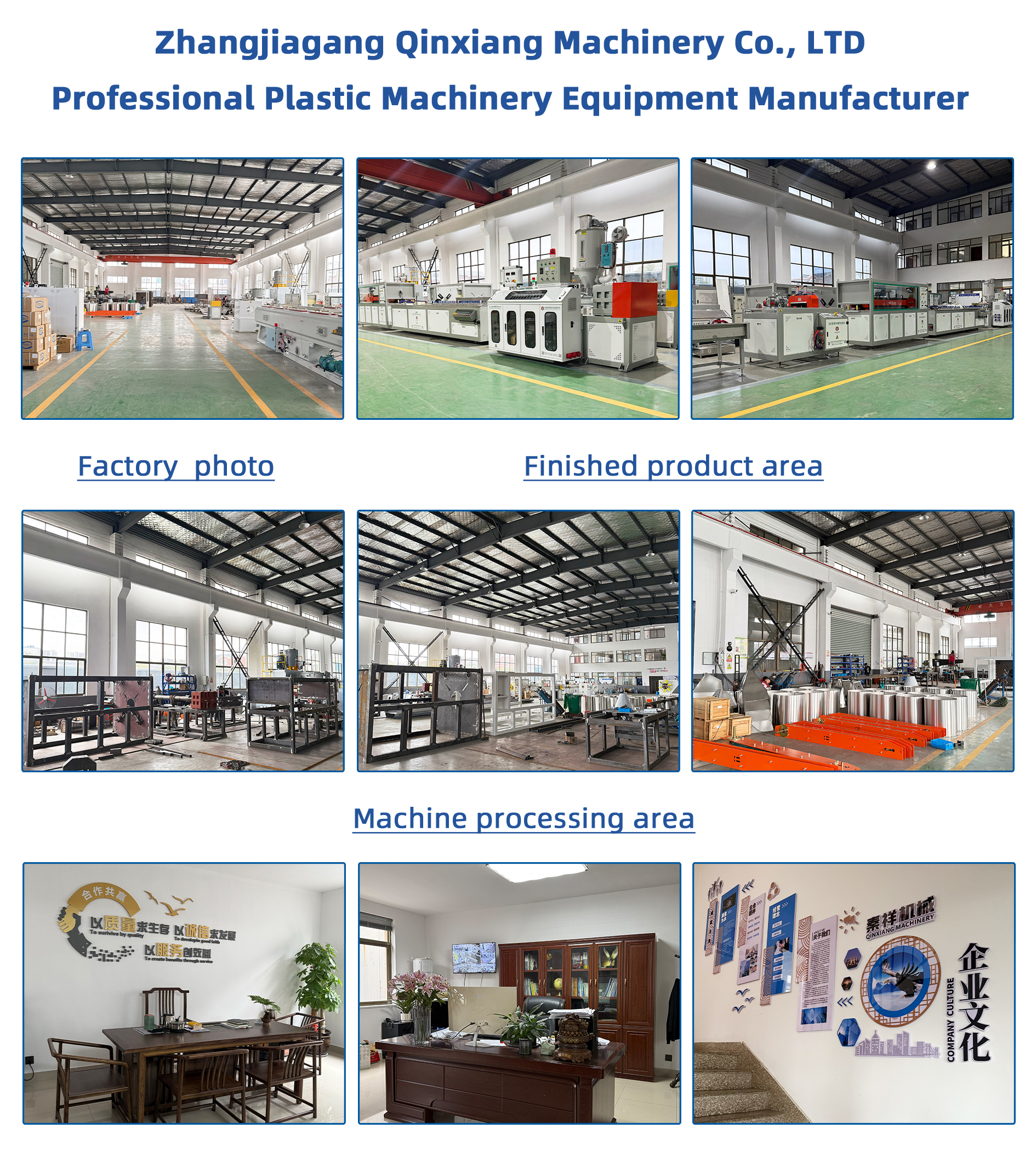
▏Corporate Culture

▏Cooperative Parts Supplier
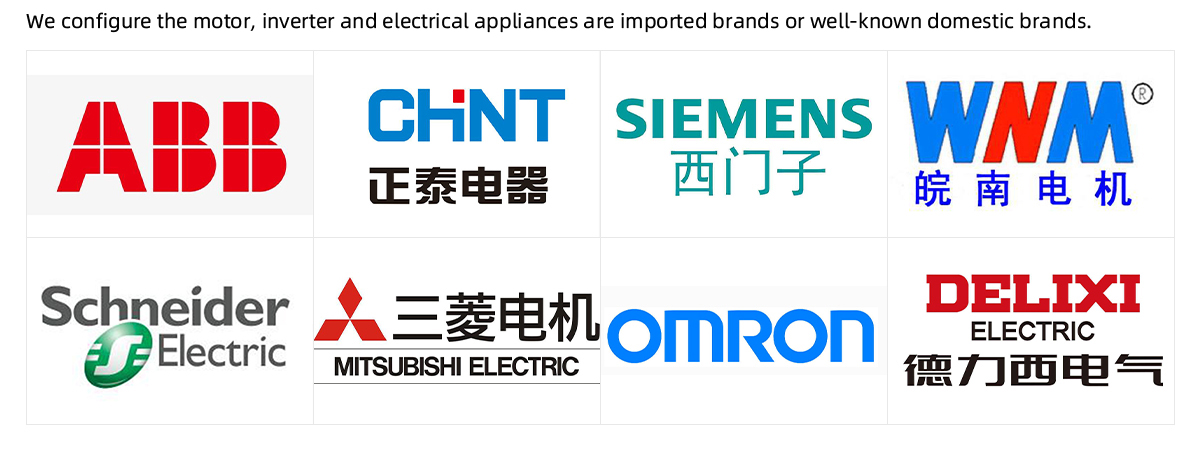
▏Packing And Shipping
